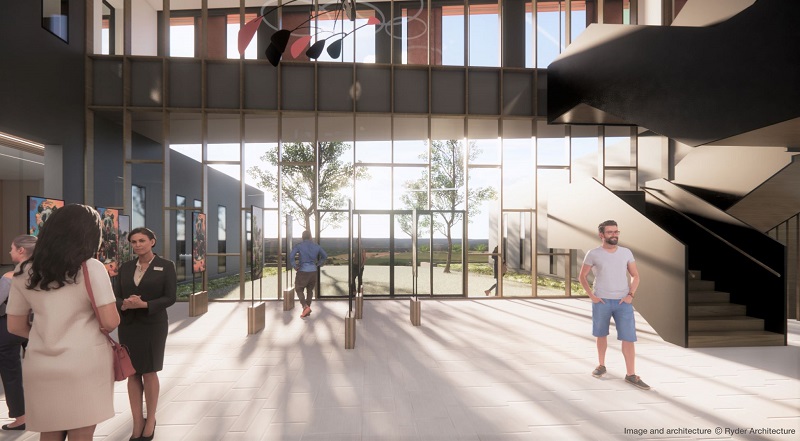For the first time the UK will be home to a National Rehabilitation Centre (NRC) following Government approval for the £105m plans.
Approval from HM Treasury means work on the site near Loughborough in the East Midlands can now begin, creating a 70-bed, purpose-built, and highly-energy-efficient new facility as part of the Government’s New Hospital Programme.
The specialist NHS facility will be built on the Stanford Hall Rehabilitation Estate, already home to the Defence Medical Rehabilitation Centre, which opened in 2018.
Transforming care
Combining patient care delivered by staff from Nottingham University Hospitals NHS Trust with research, innovation, and training, the centre’s objective is to act as the national hub to transform how people recover and regain fitness and function following serious injury or illness, and to widen access to rehabilitation beds.
The unique opportunity to pioneer innovative new approaches to rehabilitation, including integrating new technologies, with real-time feedback from clinicians and patients, is a clinical model that it is hoped will be rolled out across the country.
This will be enabled by an academic partnership led by the University of Nottingham and Loughborough University.
The green light for the NRC affirms the initiative set in motion by the sixth Duke of Westminster, who wanted to do something to help people seriously injured in the service of their country and, having proposed to build a new defence facility to replace Headley Court, was asked by the then Secretary of State, Lord Des Browne if he might ‘do something for the nation too’.
Sharing expertise
The Duke agreed and the concept of creating both a defence and an NHS specialist facility – working together and sharing expertise for mutual benefit on a single site – was developed in 2010 and led, following a gift from the Grosvenor family of more than £100m, to the defence establishment welcoming its first patients in 2018.
The now-approved NRC will be constructed 400m from the defence facility, known as DMRC Stanford Hall.
The fundamental purpose of the NRC is to enable better outcomes for people who have been seriously injured or have experienced debilitating illness.
It is anticipated the facility, which will be built by Integrated Health Projects (IHP), a joint venture between VINCI Construction UK and Sir Robert McAlpine, will open at the end of next year.
Miriam Duffy, NRC programme director at Nottingham University Hospitals NHS Trust, said: “The National Rehabilitation Centre will transform how we provide clinical rehabilitation in this country.
“This long-overdue centre will push the boundaries of rehabilitation for the next generation and bring real impact in terms of helping people to realise their full potential following injury or illness.”
The designs are inspired by best practice from around the world
First of its kind
Natalie Forrest, senior responsible officer for the New Hospital Programme, which is delivering 40 new and improved hospitals by 2030, added: “This marks a highly-significant and exciting day for investment into our New Hospital Programme and for the creation of a UK first facility of its type – a National Rehabilitation Centre.
“The benefits to NHS patients will be substantial and life changing.
“This is the latest of our New Hospital Programme schemes to get underway as part of the biggest hospital building programme in a generation, providing more-effective and efficient facilities that will help transform the way care is delivered.”
And Health Minister, Lord Markham, said: “The new 70-bed National Rehabilitation Centre will bring the latest research and training into clinical settings, not only helping people recover and live more independently after serious injury or illness, but also freeing up clinicians’ time so they can continue to cut waiting lists.
“This demonstrates further delivery on our commitment to build 40 new hospitals by 2030, to ensure staff and patients benefit from state-of-the-art facilities and modern technology.”
The designs for the NRC, developed by Ryder Architecture as part of a team that also includes Arup and landscape architect, Fira, are inspired by best practice from around the world, with the facility purpose planned and purpose designed around the patient.
The new building will also be carbon net zero and will share some specialist facilities with the DMRC such as the hydrotherapy pool, gait lab, and Computer Assisted Rehabilitation Environment (CAREN), which is a high-tech treadmill device to help people to learn to walk again.

